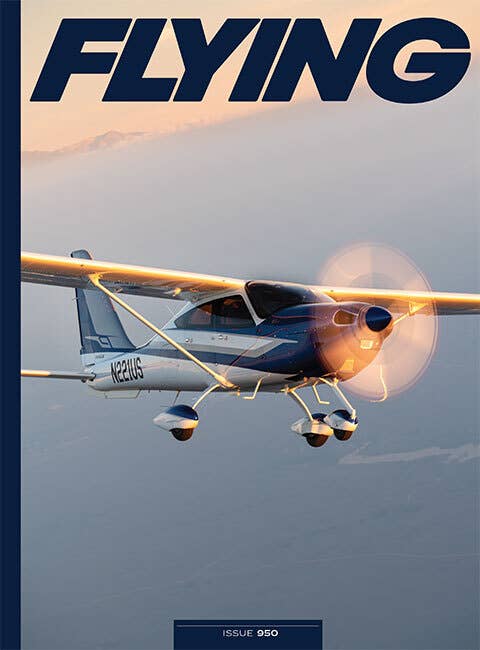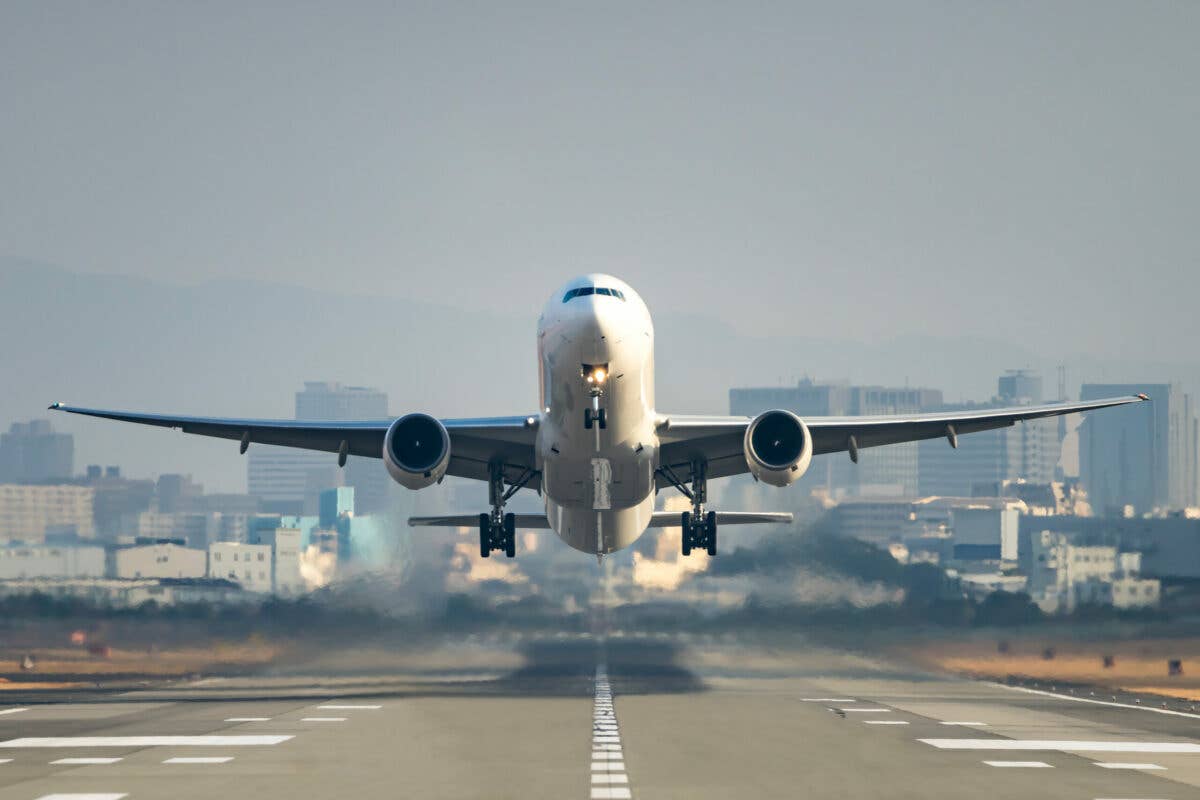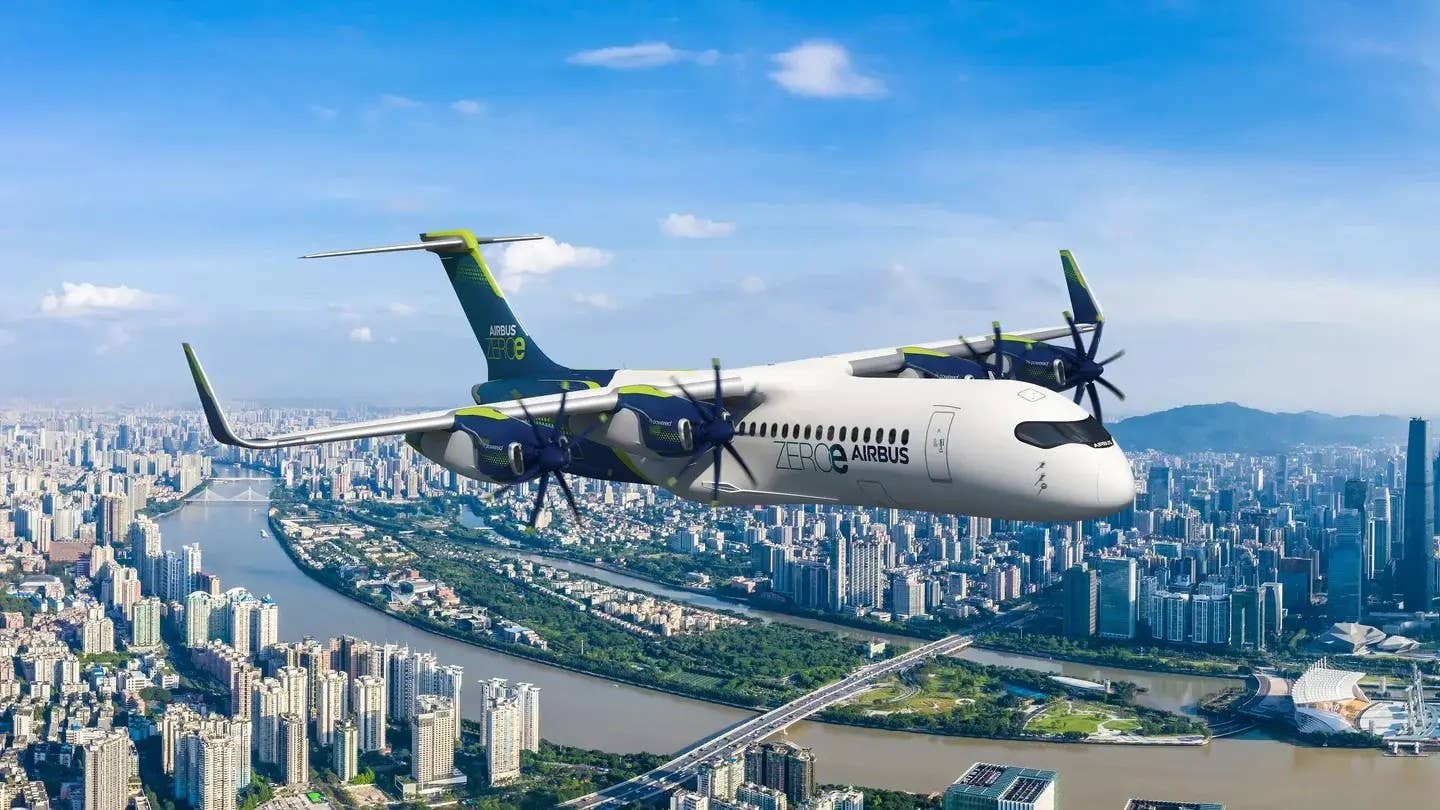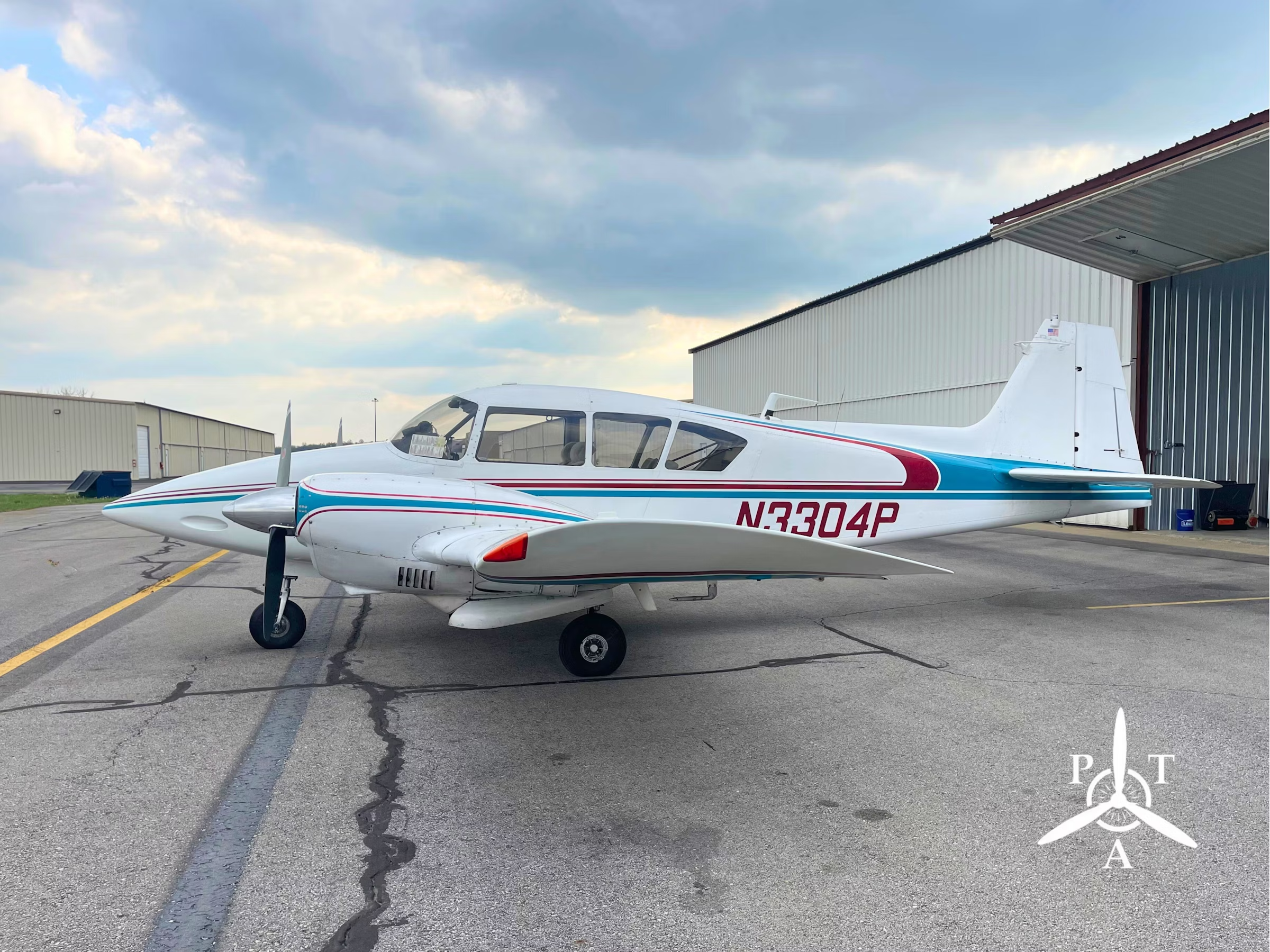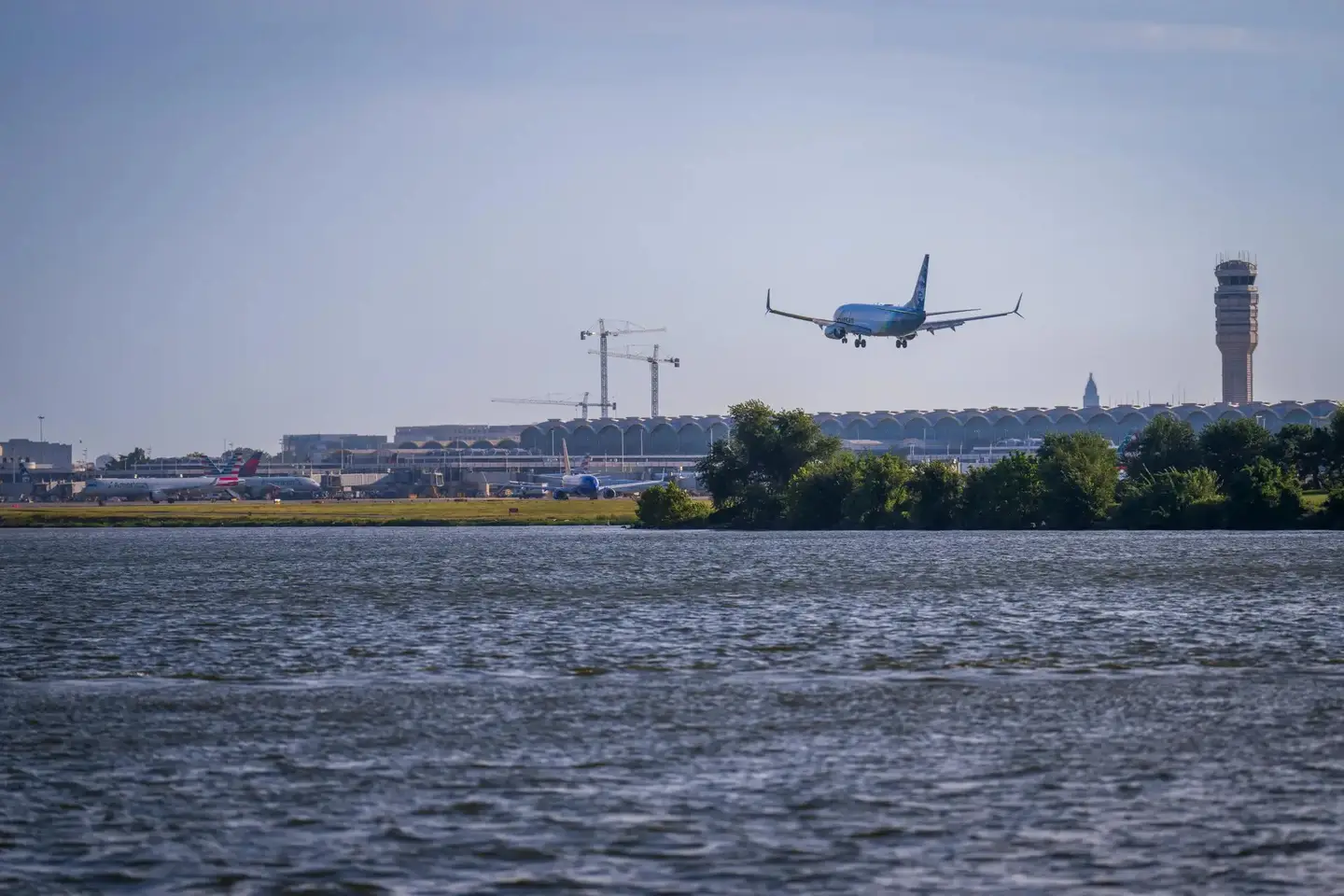Bridge Loop: Behind the Scenes of Another Red Bull First
Despite huge advances outside loops remain difficult and more hazardous than any other aerobatic maneuvers.
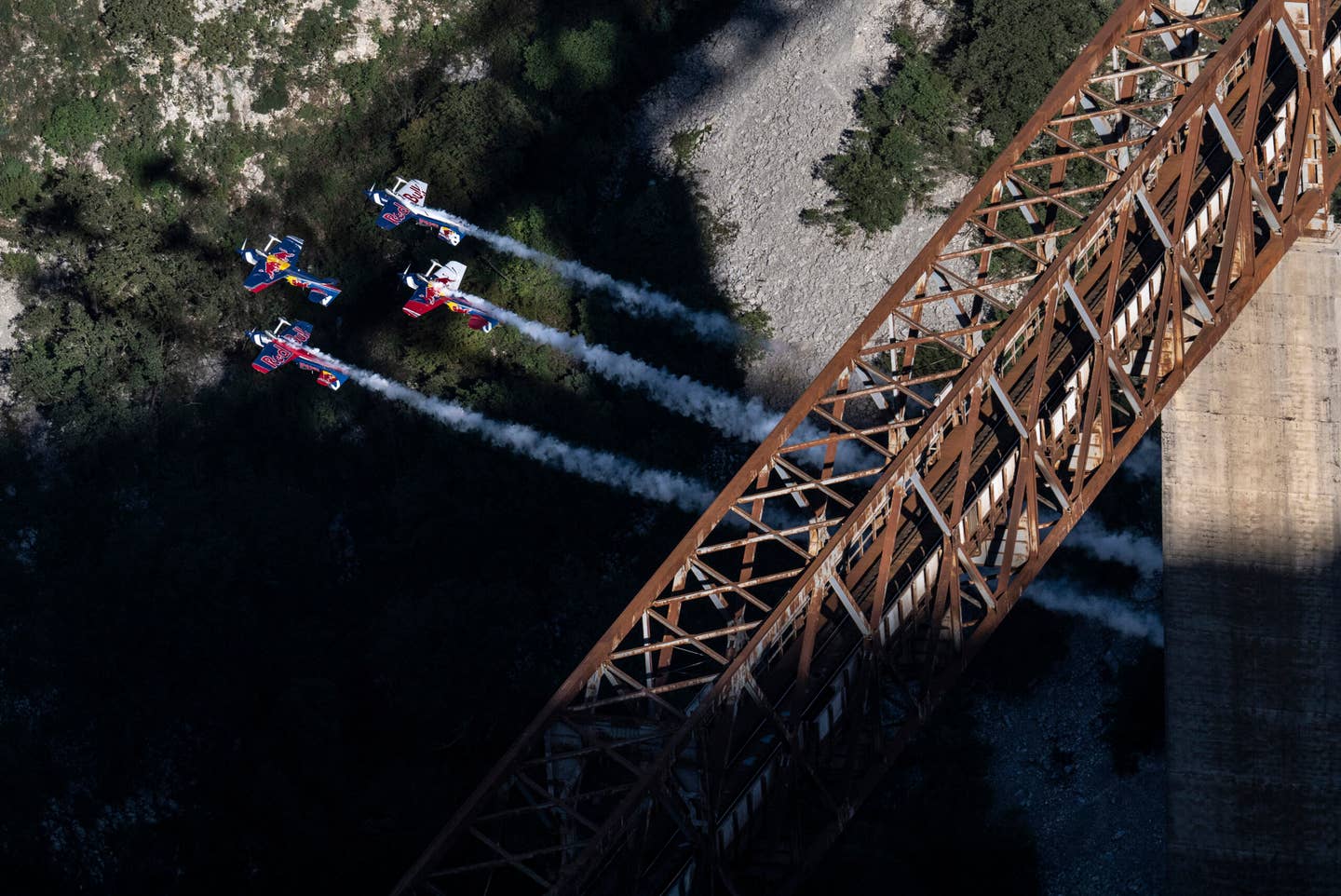
Red Bull has pushed extreme aviation to a new level, executing the first formation flight through a viaduct bridge in Montenegro. [Red Bull/Predrag Vuckovic]
On October 8, four XtremeAir Sbach 342 aerobatic aircraft took off from Montenegro’s Niksic Airport (LYNK) and flew a circuitous course through the Dinaric Mountains, following the Mala Rijeka river. Ahead of them was their objective, the Mala Rijeka Viaduct, which carries the Belgrade-Bar railway across the river valley. And at 660 feet above the valley floor, the structure is recognized as the highest rail bridge in Europe.
As the group flew over the bridge in a tight diamond formation, flight leader Stanislav Cejka eased the stick forward, cresting at the top of the loop, and gradually arcing his aircraft into a vertical dive. With airshow smoke on, the rest of the team, including left wingman Jan Rudzinskyj, right wingman Jan Tvrdik, and slot Martin Spacek, followed
Cejka down.
If you're not already a subscriber, what are you waiting for? Subscribe today to get the issue as soon as it is released in either Print or Digital formats.
Subscribe Now“When we reached the point where we were vertical, that was the last opportunity to abort,” Cejka said. “That was the decision point, and after that we were committed to flying the entire maneuver.”
The maneuver was an outside loop, rare even among top aerobatic performers and nearly unheard-of for formation flight teams. Cejka’s Red Bull-sponsored team, known as the Czech Flying Bulls, took on the added challenge of looping over and under the bridge span and between its tall support pillars, which were about 500 feet apart, to make the event truly special, Cejka said.
The loop, which many aviation fans watched on video, came off apparently without a hitch. As is typically the case with aerobatics at a high level, the Czech Flying Bulls made a difficult maneuver look easy. In fact, the Bridge Loop, as the flight is informally known, was only the final step in a demanding, complicated process of planning, rehearsing, and countless tweaking that began years earlier.
How the Plan Came Together
FLYING spoke with the team about the many critical elements that had to mesh in order for the loop to happen.
“We had been thinking about performing a special maneuver for a long time, but most have been done before,” Cejka said. “We thought of making a flyby under a bridge but realized there is nothing really special about a flyby. Eventually we decided to try an inverted loop under a bridge, because we did not believe any formation team had done that before.”
The decision to loop around a bridge kicked off two years of planning that began with scouting for the right location. Initially the Bulls wanted to find a bridge within the Czech Republic where they are based, according to team manager Martin Nepovim.
“There were numerous bridges in the game, so we began our research in the Czech Republic, conducting extensive location checks,” Nepovim said. “We climbed narrow valleys and hiked in the mountains to get close to the bridge structures. Unfortunately, almost every bridge we visited on foot had power lines nearby or populated areas that were not visible from the plane during aerial reconnaissance.”
Another limitation was traffic, particularly on road bridges. Some simply were too busy to consider for the loop. “While stopping traffic on a motorway bridge was likely impossible, railway bridges were somewhat easier to plan and coordinate with air operations,” Nepovim said. Still, they ran out of options in their home country and would have to look elsewhere.
Team members would also have to make their search and planning efforts fit into busy schedules that include performing 35 to 45 aerial displays annually. They all have day jobs as well. Cejka, Tvrdik, and Spacek fly together in the Czech Air Force while Rudzinskyj runs a general aviation business that includes flying and maintaining vintage aircraft.
The Right Bridge
“We tried Poland, Germany, Austria, and others before getting some recommendations in Montenegro,” Cejka said. “There were three possible locations there. We checked the first one in April and found it to be perfect.”
Cejka flew to the Mala Rijeka area in June to survey the bridge and the surrounding landscape from the air and determine whether the planned aerobatic flights could be performed safely. Nepovim worked on obtaining permission from the appropriate authorities.
“We simultaneously initiated discussions with the Civil Aviation Authority, the Ministry of Transport of Montenegro, and several other government agencies to secure all of the necessary permits,” Nepovim said. “We extend our gratitude to the civil aviation authorities of both the Czech Republic and Montenegro. Without their positive approach, this project would not have been possible.”
After close inspection from aloft, Cejka decided the loop could be done, though it would include a few challenges beyond what he had anticipated.
“The main difficulty is that the valley is not straight, so it was tricky to find the right path for approaching the bridge,” he said. “I made several passes over and under the bridge and realized that the space between the pillars would not seem as big with the whole formation. We would have to fly very close together.”
Prepping the Team
The team began training for the loop at its home base, focusing on precise positioning and extremely low loop recoveries. With two weeks remaining before the planned event, they moved to Montenegro for on-site training. Cejka admitted that upon seeing the bridge up close, some of his teammates were “not eager” to fly the loop. As the team leader, he said, it was his job to convince them that they could perform the maneuver safely. “I made solo flights around the bridge to show them how it would work, and that seemed to win them over,” he said.
They flew several successive passes in varying positions to get a feel for the setting, and slowly, during two weeks of practice at the bridge site worked their way toward the inside loops they planned to perform before capping the project with the outside loop.
“We started with single-ship passes over the bridge followed by multiship passes, then single and multiship passes under the bridge and so on,” Cejka said.
The height of the bridge left lots of space for the bottom half or a large loop, but Cejka knew that plunging toward the valley floor at the beginning of the outside loop would be daunting even for his seasoned team.
During the easier, more familiar inside loops he made sure his teammates were comfortable flying the tight formation that took them close to the ground and the bridge support pillars.
Much of the practice time was also spent preparing for a range of possible emergency scenarios such as engine failure, bird strikes, or other problems that would require breaking formation and aborting the attempt. When the day arrived, everyone was ready, Cejka said.
The Outside Loop
The team began training for the loop at its home base, focusing on precise positioning and extremely low loop recoveries. With two weeks remaining before the planned event, they moved to Montenegro for on-site training. Cejka admitted that upon seeing the bridge up close, some of his teammates were “not eager” to fly the loop. As the team leader, he said, it was his job to convince them that they could perform the maneuver safely. “I made solo flights around the bridge to show them how it would work, and that seemed to win them over,” he said.
They flew several successive passes in varying positions to get a feel for the setting, and slowly, during two weeks of practice at the bridge site worked their way toward the inside loops they planned to perform before capping the project with the outside loop.
“We started with single-ship passes over the bridge followed by multiship passes, then single and multiship passes under the bridge and so on,” Cejka said.
The height of the bridge left lots of space for the bottom half or a large loop, but Cejka knew that plunging toward the valley floor at the beginning of the outside loop would be daunting even for his seasoned team.
During the easier, more familiar inside loops he made sure his teammates were comfortable flying the tight formation that took them close to the ground and the bridge support pillars.
Much of the practice time was also spent preparing for a range of possible emergency scenarios such as engine failure, bird strikes, or other problems that would require breaking formation and aborting the attempt. When the day arrived, everyone was ready, Cejka said.
A Treacherous History
Aviation fans of a certain age might recall a character in the 1975 Robert Redford film The Great Waldo Pepper who died trying to complete the first outside loop. The character was fictional, but the peril depicted in the movie, set in the 1920s, was all too real. During that time aircraft design and performance were advancing rapidly, but few airframes could reliably withstand the stress of an outside loop even if the pilot could.
It took Jimmy Doolittle, who was on his way to becoming the consummate aviation legend, to perform the first outside loop in 1927, flying a Curtiss P-1B Hawk biplane fighter. He described the experience in his autobiography, I Could Never Be So Lucky Again. Even Doolittle, who later set speed records, won air races, pioneered instrument flying, and led a group of B-25s in a bombing raid on Tokyo in 1942, had a near-death experience while performing an outside loop in 1929.
He was attempting to repeat his earlier feat in a Curtiss P-1C when the airplane’s wings broke away in flight.
Doolittle parachuted safely and the airplane was destroyed. A design change between the Curtiss P-1B and P-1C models allowed the latter to reach higher speeds in a dive.
Despite huge advances in airframes, engines, and other equipment, outside loops remain difficult and more hazardous than other aerobatic maneuvers.
Richard Denman, a pilot based at Sussex Airport (KFWN) in New Jersey, soloed at 16 during the 1970s. Denman was inspired by the late Leo Loudenslager, an aerobatic national and world champion who also was based at Sussex and flew regularly in airshows from the 1970s to the ’90s. He began flying aerobatics in 2006, and today owns an Extra 330LT in which he regularly flies intense aerobatic routines that do not include outside loops.
“I have never flown an outside loop,” Denman said, noting the 4-G stress at the bottom of the maneuver. “Too much risk.”
For the Flying Bulls, the risk involved is a critical part of what made the outside loop impressive and helped to maintain their reputation and elevate their reputation. The team likes to perform challenging maneuvers while adding extra degrees of difficulty. “The inverted loop is difficult, and doing it under a bridge is more so,” Cejka said.
Still, with proper preparation, technique, and the right aircraft, the maneuver can be performed far more safely and reliably today than a century ago, Cejka said.
Bill Thomas, a well-known aerobatic competitor, judge, and author explained in his book Fly for Fun to Win that pilots can think of the outside loop as a few easier maneuvers combined into one. The parts, including the English bunt and the push out to inverted following a hammerhead turn, can be combined once the pilot masters them.
“Flying the outside loop is just putting the pieces together,” said Thomas, who also recommended flying inside loops first, which is how the Bulls did it.
The Right Drone Pilot
With cameras in position and renowned drone pilot Colas Feullie recording, the team took off to perform what it hoped would be a landmark display. The team began with practice runs, including flybys and inside loops to warm up, which also helped Feullie nail down his timing and positioning.
“The guys needed several tries to perfectly set up, and I needed that, too, though I was working on this shot in my head for a couple of months already,” Feullie said. “I had to understand how to set up my trajectories and timing.”
In April, Feullie used his custom-built, high-performance drone to record aerobatic flights with Dario Costa, the pilot renowned for setting numerous records, including flying through a motorway tunnel in Istanbul.
“It made me understand how planes are moving in the air and how to film this new subject because having a drone that is fast enough to film these planes is something really new,” Feullie said.
Cejka said he planned the formation’s path carefully, allowing space for his team’s aircraft and for the following drone, and used numerous reference points such as formations on the surrounding mountains and the points where the bridge pillars met the ground, to keep the group on course. However, some of the drone footage shows just how close they were to the cliff faces and other potential hazards at times. Cejka said this gave him pause.
“I was surprised to see how close the obstacles were,” he said. “You don’t notice while you are flying, but when you see the flights on video, some parts are scary.
People who believe they have seen it all in terms of drone footage should take a look at Feullie’s work, which provides a truly unique point of view.
This feature first appeared in the February Issue 955 of the FLYING print edition.
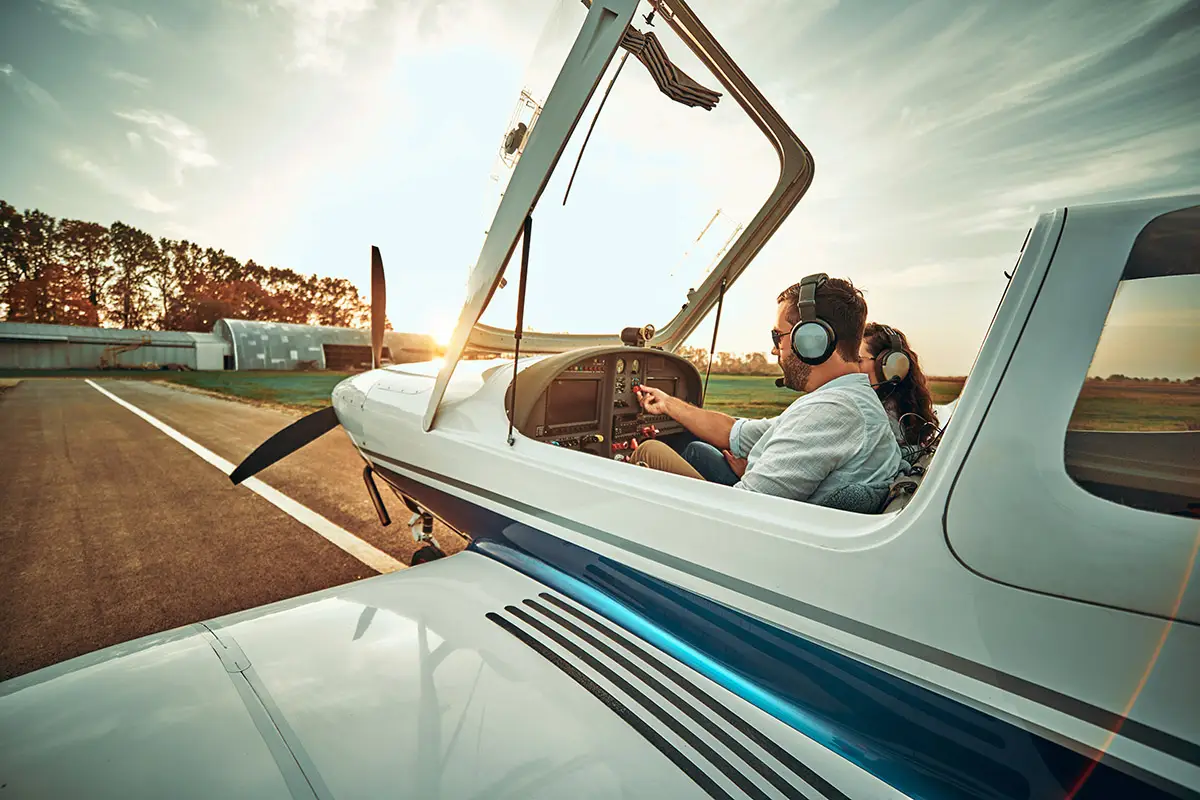
Sign-up for newsletters & special offers!
Get the latest FLYING stories & special offers delivered directly to your inbox

